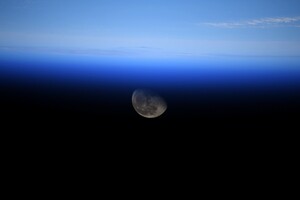Water was found in the Boer Ocean on the Earth's satellite.

Chinese Chang'e-5 Mission , in which samples of lunar soil were delivered to Earth, allowed to find evidence of the existence of water on the moon. Moreover, this was done both during the on-site analysis and in the materials that were transferred to our planet, according to Space.com.
The Chang'e-5 mission landed on the moon in 2020, gathering the youngest lunar material ever studied. Shortly afterwards, a special module launched from the Boer Ocean on a satellite of the Earth, carrying samples that were transferred to our planet.
Read also: Rogozin spoke again about the construction of a Russian-Chinese lunar station
A scan of the region's surface in this region, as well as a laboratory analysis of the material, confirmed the existence of water on the moon.
“For the first time in the world, the results of laboratory analysis of lunar samples and spectral data from lunar surface research were used together to study the presence, shape and amount of” water “in lunar samples,” said Li Chunlai, a planetologist at the National Astronomical Observatory. .
However, these results do not indicate that there are water reservoirs on the moon. Rather, they show that the soil and rocks of the lunar surface contain about 30 hydroxyl parts per million. Hydroxyl, which consists of one hydrogen atom and one oxygen atom, is the basis of water.
Scientists have also found that the source of water is on the moon and is contained in a crystalline mineral called apatite. Less hydroxyl than expected came from the solar wind, a stream of charged particles from the sun that crashes on the moon, enriching its surface. . According to them, it could have appeared on the satellite of our planet due to the action of “earth wind” – a stream of particles emitted by the planet's magnetosphere.




